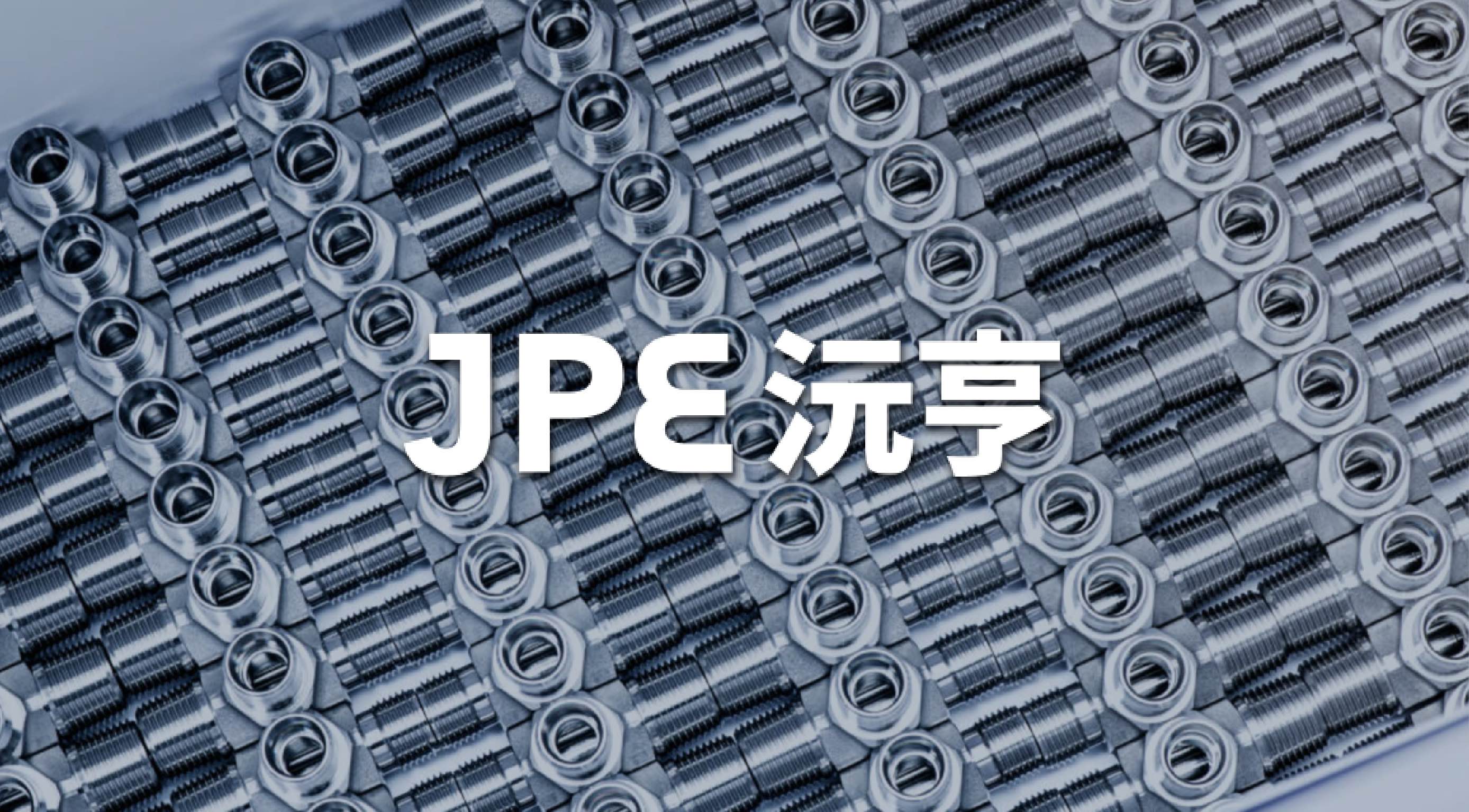JPE Industry Insights|Product Material Selection Guide: How to Choose the Right Material to Optimize Performance and Cost
2025-09-25
Industry Knowledge Popularization
When designing and procuring tube fittings, valves, and manifold products, the correct choice of material directly impacts corrosion resistance, pressure/temperature tolerance, sealing reliability, and overall cost. This article provides practical material selection recommendations and application scenarios for JPE’s common product types (including manifolds, tube fittings, and threaded fittings), serving as a quick reference for both sales and engineering teams.
Part I | Key Considerations in Material Selection
A. Fluid medium: Water, oil, gas, acids/alkalis, organic solvents, or high-purity chemicals?
B. Temperature range: Cryogenic (< -100°C), low temperature (< -20°C), ambient, or high temperature (> 150°C)
C. Working pressure: Low-pressure instrumentation, flow/pressure control, or high-pressure hydraulic/pneumatic systems.
D. Cleanliness/sanitary requirements: Food/pharmaceutical or semiconductor applications requiring high-purity materials, cleanroom assembly and packaging.
E. Corrosion resistance and service life: Long-term exposure to seawater, acids/alkalis, or chemical corrosion, or operation in harsh environmental conditions?
F. Cost and machinability: Under budget constraints, is brass or carbon steel acceptable as an alternative to stainless steel?
G. Connection compatibility: Double ferrule, imperial/metric, internal/external threads, flanges, welding specifications, and other mechanical connections.
Part II | Common Materials and Their Characteristics
A. Stainless Steel 316/316L
• Advantages: Excellent corrosion resistance (including seawater and most chemicals), high-temperature capability, suitable for sanitary/semiconductor, oil & gas, and chemical industries.
• Disadvantages: Higher cost, more difficult to machine.
• Applications: Chemicals, marine/salt spray environments, food/pharmaceutical, long-service-life instrumentation and control systems.
B. Stainless Steel 304
• Advantages: Good corrosion resistance and strength, lower cost than 316.
• Disadvantages: Less resistant to chlorides compared to 316.
• Applications: General water, steam, process cooling, non-aggressive liquid applications.
C. Brass
• Advantages: Low cost, excellent machinability, commonly used in instrumentation and low-pressure fluid systems.
• Disadvantages: Poor corrosion resistance against strong acids/alkalis and some solvents; prone to seawater corrosion.
• Applications: Compressed air, general water hardware, sampling instrumentation, low to medium-pressure fittings and valves.
D. Carbon Steel/Coated Steel
• Advantages: High strength, lower cost (suitable for high-pressure/structural components).
• Disadvantages: Requires protective coating (zinc plating or paint), unsuitable for direct contact with corrosive media.
• Applications: High-pressure hydraulic/pneumatic pipelines (non-corrosive media), housings, or supports.
E. Plastics and Engineering Plastics (PTFE, PEEK, PCTFE)
• Advantages: Excellent resistance to strong acids/alkalis, low friction, good chemical compatibility (PTFE, PEEK, PCTFE), lightweight.
• Disadvantages: Lower mechanical strength, pressure, and temperature tolerance compared to metals (varies by material).
• Applications: Chemical dosing, corrosive solutions, inert linings, or high-purity applications (PTFE seals, linings).
F. Soft Sealing Materials (Common Options)
• PTFE: Excellent chemical resistance, low friction, suitable for high-purity/corrosive media.
• FKM (Viton): Resistant to high temperatures and many mildly corrosive fluids, suitable for standard hydraulic/pneumatic systems.
• NBR (Buna-N): Low cost, suitable for oils and general liquids, good oil resistance but weaker heat resistance.
• EPDM: Resistant to hot water and certain acids/alkalis, not suitable for oils/organic solvents.
Part III | Recommended Materials for Typical Applications
A. Chemical dosing (acids, alkalis, organic solvents)
• Recommendation: Stainless steel 316/316L + PTFE seals, or FFKM for extremely high corrosion resistance.
• Key Point: Verify compatibility of solvent and seal material; elevated temperature or vapor exposure may require more heat-resistant seals.
B. Marine or chloride environments (seawater systems, coastal equipment)
• Recommendation: SS316L stainless steel or passivated SS316; avoid SS304 and brass.
• Key Point: Choose seals resistant to salt spray; ensure regular maintenance or apply anti-corrosion coatings.
C. Hydraulic systems (high pressure, with particulates)
• Recommendation: Carbon steel or stainless steel body + FKM/NBR seals (depending on oil type).
• Key Point: Include filtration for particulate contamination; select wear-resistant valve cores or apply surface hardening treatments.
D. Instrument/gas sampling and precision dosing (low flow rate)
• Recommendation: Brass or stainless steel 316L (depending on gas corrosivity), PTFE seals to reduce retention.
• Key Point: Accuracy of fittings, fitting type (ferrule/thread), and orifice size must match system flow requirements.
E. Food/pharmaceutical/high-purity applications
• Recommendation: 316L stainless steel, polished inner surface, PTFE or FDA-approved seals.
• Key Point: Surface roughness, cleanliness, and sterilization compatibility are top priorities.
F. Low-cost general-purpose use (non-corrosive water, compressed air, industrial cooling)
• Recommendation: Brass or stainless steel 304, standard NBR seals.
• Key Point: When cost is the main driver, still evaluate expected service life and maintenance frequency.
Part IV | JPE Product-Specific Notes
A. Connection type (ferrule / internal & external threads / imperial / metric) must be cross-checked during material selection to ensure compatibility of sealing surfaces and avoid leakage from differential thermal expansion.
B. Small orifices (e.g., < 0.1 mm) require high precision in material selection and machining; SS316 or high-grade brass is recommended for wear resistance and precision.
C. High-purity or semiconductor-grade fluids require 316L with PTFE gaskets or full stainless steel fittings to minimize contamination risk.
Part V | Quick Decision Checklist (For Sales Quotations and Engineering Design)
• Medium type: ________ (acid/alkali/oil/gas/water/solvent)
• Operating temperature: ________ °C
• Maximum working pressure: ________ bar/MPa
• Food/pharmaceutical or semiconductor grade required: Yes / No
• Contains abrasives or particulates: Yes / No
• Priority: Cost / Service life / Performance
Based on the above, refer to the recommended material list; if cross-disciplinary or uncertain, prioritize 316/316L + PTFE/FKM seals for universality and reliability.
Conclusion and Call to Action
The right material decisions can significantly reduce maintenance time and overall ownership cost, while enhancing system reliability. Recommended next steps:
1. Please provide specific medium composition, temperature, and pressure data to the JPE engineering team for precise material and seal recommendations.
2. If you require samples or material comparison guides, contact your local JPE sales representative or call the consultation number at the end of this document.